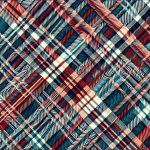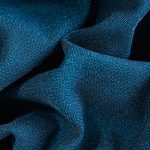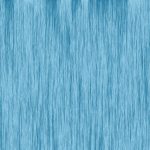Hey there!
You might not realize it, but there's a lot more to plaid and flannel than meets the eye.
Have you ever wondered what sets these two popular fabric styles apart? Well, get ready to dive into the world of textiles as we explore the key differences between plaid and flannel.
From their origins and fabric compositions to the distinct patterns and common uses, we'll cover it all.
So, if you're looking to master the art of identifying and choosing between these classic patterns, you've come to the right place.
Let's unravel the mystery of plaid versus flannel!
Key Takeaways
- Plaid originated in the Scottish Highlands as tartan patterns representing specific clans, while flannel originated in Wales and was crafted from wool or yarn for warmth and durability.
- Plaid refers to the pattern of interlacing colors, while flannel refers to a soft, woven fabric. Plaid fabric can be made from various materials, while flannel is often made from wool or cotton.
- Plaid patterns often feature bold and contrasting colors, creating a striking appearance, while flannel patterns tend to be more subtle and subdued, offering a softer and relaxed aesthetic.
- Both plaid and flannel are commonly used for garments, home decor, and accessories, and they offer versatility and durability for a wide range of practical and fashionable applications.
History and Origins
The history and origins of plaid and flannel date back to distinct cultural traditions and weaving techniques. The textile evolution of plaid can be traced to the Scottish Highlands, where it was originally known as tartan. Each tartan pattern represented a specific Scottish clan, showcasing cultural significance and identity. Over time, plaid became popular worldwide, evolving from a symbol of tradition to a timeless fashion statement.
On the other hand, flannel originated in Wales, where it was crafted from wool or yarn, renowned for its warmth and durability. Both plaid and flannel share a rich history rooted in craftsmanship and functionality.
Plaid and flannel have transcended their cultural origins, becoming beloved fabrics in contemporary fashion and lifestyle. Understanding the roots of these textiles provides a deeper appreciation for their enduring appeal. Whether you're drawn to the heritage of plaid or the practicality of flannel, their history adds an enriching layer to your wardrobe choices.
Fabric and Weave
When choosing between plaid and flannel, understanding the fabric and weave is essential to making an informed decision. The fabric type and weave not only affect the appearance of the garment but also its warmth, durability, and comfort. Here are a few key points to consider:
- Fabric Types: Plaid refers to the pattern of interlacing colors in the fabric, while flannel refers to a soft, woven fabric that's often made from wool or cotton. Understanding the distinctions between these fabric types can help you choose the one that best suits your needs.
- Textile Production: The production process for plaid and flannel fabric differs. Plaid fabric can be made from various materials and is characterized by a distinct pattern, whereas flannel fabric is known for its softness and warmth, making it a popular choice for cold weather.
- Weave: Plaid patterns can be woven into various types of fabric, including flannel. Flannel fabric is known for its loosely spun yarns, which create a soft, fuzzy surface that provides insulation.
- Durability and Comfort: Understanding the weave and fabric types can help you determine the durability and comfort of the garment, ensuring that you make a well-informed choice.
Patterns and Designs
Understanding the differences in patterns and designs of plaid and flannel fabrics is crucial in making an informed choice for your garment. When it comes to patterns, plaid is often associated with tartan, a pattern consisting of crisscrossed horizontal and vertical bands in multiple colors. On the other hand, flannel fabrics can feature a variety of patterns, including check, which consists of equally sized, colored squares intersecting to form a grid pattern. When it comes to color combinations and contrast, both plaid and flannel offer a wide range of options. Plaid fabrics often feature bold and contrasting colors, creating a striking and vibrant appearance. Flannel, on the other hand, can also showcase a mix of colors, but the patterns tend to be more subtle and subdued, offering a softer and more relaxed aesthetic. To better illustrate the differences, consider the following table:
| Aspect | Plaid | Flannel |
|---|---|---|
| Pattern Type | Tartan | Check |
| Color Combination | Bold and contrasting colors | Subtle and subdued |
Common Uses and Applications
For crafting garments and home decor, both plaid and flannel are utilized in a wide range of practical and fashionable applications. Plaid and flannel fabrics have been used for centuries in various ways due to their versatility and durability. Here are some common uses and applications:
- Garments: Both plaid and flannel are commonly used to make shirts, dresses, skirts, and outerwear. Their warmth, comfort, and stylish patterns make them popular choices for fall and winter fashion trends.
- Home Decor: These fabrics are also widely used in home decor, such as in upholstery for furniture, curtains, and throw blankets. The cozy and rustic appeal of plaid and flannel can add warmth and charm to any living space.
- Accessories: From scarves and hats to handbags and ties, plaid and flannel accessories are a staple in fashion. They add a touch of classic style to any outfit.
- Crafting Projects: Quilting, pillow covers, and table linens are just a few examples of how plaid and flannel fabrics are used in crafting. Their timeless appeal makes them a popular choice for DIY projects.
Care and Maintenance
To keep your plaid and flannel fabrics in top condition, regularly wash them in cold water and avoid using bleach to preserve their colors and textures.
When washing, turn the garments inside out to protect the outer surface. It's also essential to separate them from other clothes to prevent potential color bleeding.
For stain removal, treat any spots promptly with a gentle stain remover, following the product instructions.
Fabric softeners can be used, but sparingly, as they can affect the absorbency of flannel.
After washing, air-dry your plaid and flannel items by laying them flat or hanging them up. Avoid using high heat, as it can cause shrinkage and damage the fibers. If using a dryer, select a low heat setting and promptly remove the garments to minimize wrinkles.
When ironing, use a low heat setting and steam to smooth out any wrinkles.
Frequently Asked Questions
Are Plaid and Flannel Shirts Suitable for All Body Types?
Yes, plaid and flannel shirts are suitable for all body types. The key is finding flattering styles and incorporating them into your fashion trends. Embrace body positivity and use styling tips to rock these shirts with confidence.
Can Plaid and Flannel Be Used Interchangeably in Home Decor?
Sure, you can use plaid decor and flannel upholstery interchangeably in home decor. Plaid adds a classic touch to any room, while flannel brings warmth and texture. Mix and match to create a cozy and stylish space.
Do Plaid and Flannel Come in Different Weights for Different Seasons?
Yes, both plaid and flannel come in different weights for seasonal versatility. They can be lighter for warmer weather and heavier for colder seasons. This makes them suitable for year-round use in various climates.
What Are Some Traditional Cultural Uses of Plaid and Flannel?
Traditional celebrations and folk fashion have long embraced plaid and flannel. These fabrics hold cultural significance, with historical uses dating back to ancient times. They are versatile and have been used for various purposes throughout history.
Are There Any Environmental or Ethical Concerns Related to the Production of Plaid and Flannel Fabrics?
When considering the environmental impact and ethical sourcing of plaid and flannel fabrics, it's essential to prioritize sustainable practices. Look for certifications like organic or Fair Trade to ensure minimal harm and fair treatment throughout production.
- Synthetic Chamois Fabric: A Comprehensive Guide - June 22, 2025
- Understanding Micro Chamois Fabric: Features and Benefits - June 22, 2025
- Cotton Chamois Fabric: Uses and Benefits - June 22, 2025







